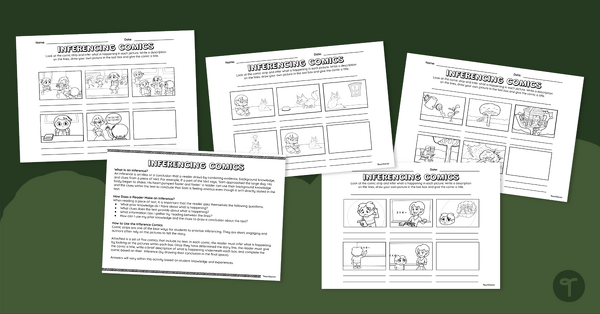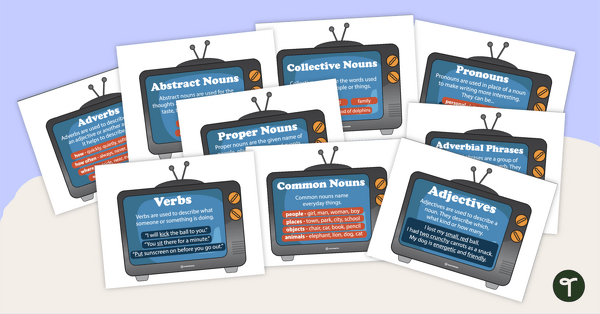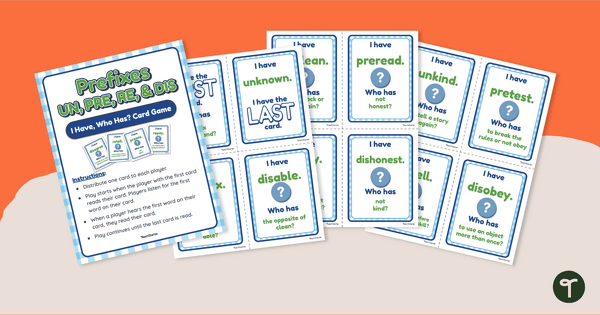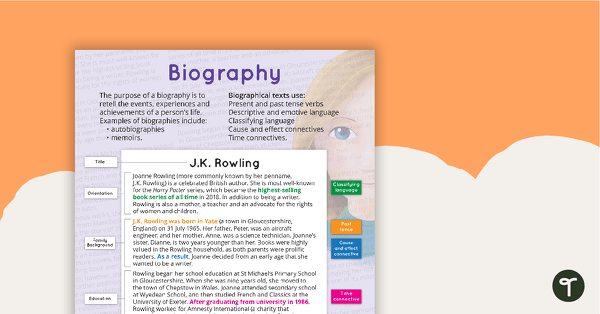Year 3
The English curriculum is built around the three interrelated strands of language, literature and literacy. Teaching and learning programs should balance and integrate all three strands. Together, the strands focus on developing students' knowledge, understanding and skills in listening, reading, viewing, speaking, writing and creating. Learning in English builds on concepts, skills and processes developed in earlier years, and teachers will revisit and strengthen these as needed.
In Years 3 and 4, students experience learning in familiar contexts and a range of contexts that relate to study in other areas of the curriculum. They interact with peers and teachers from other classes and schools in a range of face-to-face and online/virtual environments.
Students engage with a variety of texts for enjoyment. They listen to, read, view and interpret spoken, written and multimodal texts in which the primary purpose is aesthetic, as well as texts designed to inform and persuade. These encompass traditional oral texts including Aboriginal stories, picture books, various types of print and digital texts, simple chapter books, rhyming verse, poetry, non-fiction, film, multimodal texts, dramatic performances and texts used by students as models for constructing their own work.
The range of literary texts for Foundation to Year 10 comprises Australian literature, including the oral narrative traditions of Aboriginal and Torres Strait Islander Peoples, as well as the contemporary literature of these two cultural groups, and classic and contemporary world literature, including texts from and about Asia.
Literary texts that support and extend students in Years 3 and 4 as independent readers describe complex sequences of events that extend over several pages and involve unusual happenings within a framework of familiar experiences. Informative texts include content of increasing complexity and technicality about topics of interest and topics being studied in other areas of the curriculum. These texts use complex language features, including varied sentence structures, some unfamiliar vocabulary, a significant number of high-frequency sight words and words that need to be decoded phonically, and a variety of punctuation conventions, as well as illustrations and diagrams that support and extend the printed text.
Students create a range of imaginative, informative and persuasive types of texts including narratives, procedures, performances, reports, reviews, poetry and expositions.
(source: www.australiancurriculum.edu.au)
Achievement Standard
Receptive modes (listening, reading and viewing)
By the end of Year 3, students understand how content can be organised using different text structures depending on the purpose of the text. They understand how language features, images and vocabulary choices are used for different effects.
They read texts that contain varied sentence structures, a range of punctuation conventions, and images that provide extra information. They use phonics and word knowledge to fluently read more complex words. They identify literal and implied meaning connecting ideas in different parts of a text. They select information, ideas and events in texts that relate to their own lives and to other texts. They listen to others' views and respond appropriately using interaction skills.
Productive modes (speaking, writing and creating)
Students understand how language features are used to link and sequence ideas. They understand how language can be used to express feelings and opinions on topics. Their texts include writing and images to express and develop, in some detail, experiences, events, information, ideas and characters.
Students create a range of texts for familiar and unfamiliar audiences. They contribute actively to class and group discussions, asking questions, providing useful feedback and making presentations. They demonstrate understanding of grammar and choose vocabulary and punctuation appropriate to the purpose and context of their writing. They use knowledge of letter-sound relationships including consonant and vowel clusters and high-frequency words to spell words accurately. They re-read and edit their writing, checking their work for appropriate vocabulary, structure and meaning. They write using joined letters that are accurately formed and consistent in size.
(source: www.australiancurriculum.edu.au)
- Plus Plan

Persuasive Devices Crossword
Familiarise your students with the most common persuasive devices with an engaging crossword puzzle.
- Plus Plan

Rhetorical Questions Interactive Activity
Explore rhetorical questions with your students using this digital game perfect for your persuasive writing lessons.
- Plus Plan

Label the Non-Fiction Text Features Worksheets
Have your students label text features in non-fiction texts with this set of three differentiation text features worksheets.
- Plus Plan

Non-Fiction Text Features Teaching Slides
Explore the features of non-fiction texts with your students using this detailed and age-appropriate slideshow for primary school literacy lessons.
- Plus Plan

Inference Comics - Worksheet
Use this set of comic strips when teaching your students how to infer information from everyday situations.
- Plus Plan

Hunting for Homophones – SCOOT! Task Cards
Get your students to identify the correct homophones in sentences with this set of 36 task cards for your vocabulary lessons.
- Plus Plan

Homophone Mandala Flower Worksheets
Have your students create a colourful mandala flower while simultaneously demonstrating their understanding of common homophones.
- Plus Plan

OREO® Planning Template - Persuasive Paragraph
Help your students write well constructed persuasive paragraphs using the OREO acronym with these planning templates.
- Plus Plan

Homophones in the Dictionary Worksheets
Help your students become familiar with the meanings and spellings of common homophones with this differentiated dictionary skills worksheet.
- Plus Plan

Persuasive Sentence Starters Classroom Display
Help your students begin their persuasive writing with a strong sentence starter.
- Plus Plan

Year 3 Magazine – What’s Buzzing? (Issue 2)
A beautifully designed, 24-page reading magazine specifically designed for Year 3 students.
- Plus Plan

Homophones Poster Pack
Surround your students with examples of homophones with this set of 20 classroom posters.
- Plus Plan

Grammar TVs
Grammar presented on TVs.
- Free Plan

Book Review Templates – Garden Theme
Create a display of student book reviews using this garden-themed book report template.
- Free Plan

Finding the Main Idea - Graphic Organiser Templates
A worksheet to use when teaching students how to find the main idea of a text.
- Plus Plan

Suffix Stars - Interactive Suffix Review
Practice reading and spelling plural nouns with an engaging Google Slides digital learning activity.
- Plus Plan

I Have, Who Has Prefix Game
Play an exciting game to help your students identify and define words with the prefixes - pre, re, un, and dis.
- Plus Plan

Using Suffixes - Grammar Worksheet
Review concepts related to suffixes with a printable grammar worksheet.
- Free Plan

Prefix Fun! - Cut and Paste Worksheet
Cut and paste to build words with prefixes with an engaging worksheet activity.
- Plus Plan

Suffix Mini Anchor Charts
Give your students a visual reminder of the meanings of 28 affixes with a printable set of miniature suffix anchor charts.
- Free Plan

Recess Rules: True Friends – Worksheet
Learn about being a good friend while also brushing up on those reading comprehension skills with this comic strip activity.
- Plus Plan

Comprehension Task Cards - Identifying Author's Purpose
A set of comprehension task cards to help students identify the author's purpose when reading.
- Plus Plan

Persuasive Writing Bump It Up Wall – Year 3
A visual display for your classroom to help students ‘bump up’ their persuasive writing.
- Plus Plan

Is/Are Subject Verb Agreement Task Cards
Practice using 'is' and 'are' correctly using a set of subject-verb agreement task cards.
- Free Plan

Pixel Art Syllable Types
Consolidate understanding of syllable types with these appealing worksheets.
- Plus Plan

Reading Response Journal – Comprehension Templates
A journal with comprehension sheets designed for students to study texts.
- Plus Plan

Biography Text Type Poster With Annotations
A poster about the biography text type, including an annotated example.
- Plus Plan

Proper Nouns Crossword Puzzle - Worksheet
A crossword researching different proper nouns.
- Plus Plan

Rhyming Poems Poster and Template
Teach your students all about rhyming couplet poems with this classroom poster and accompanying student worksheets.
- Plus Plan

Alliteration Poem Poster and Templates
Use this alliteration poem example and accompanying worksheets to teach your students how to write an alliteration poem.
- Plus Plan

Phonics Word Builder Tiles
A comprehensive set of phonemes and their letter combinations to help your students build words.
- Plus Plan

Persuasive Writing Worksheet - Would You Rather?
A worksheet for students to use to write an persuasive composition.